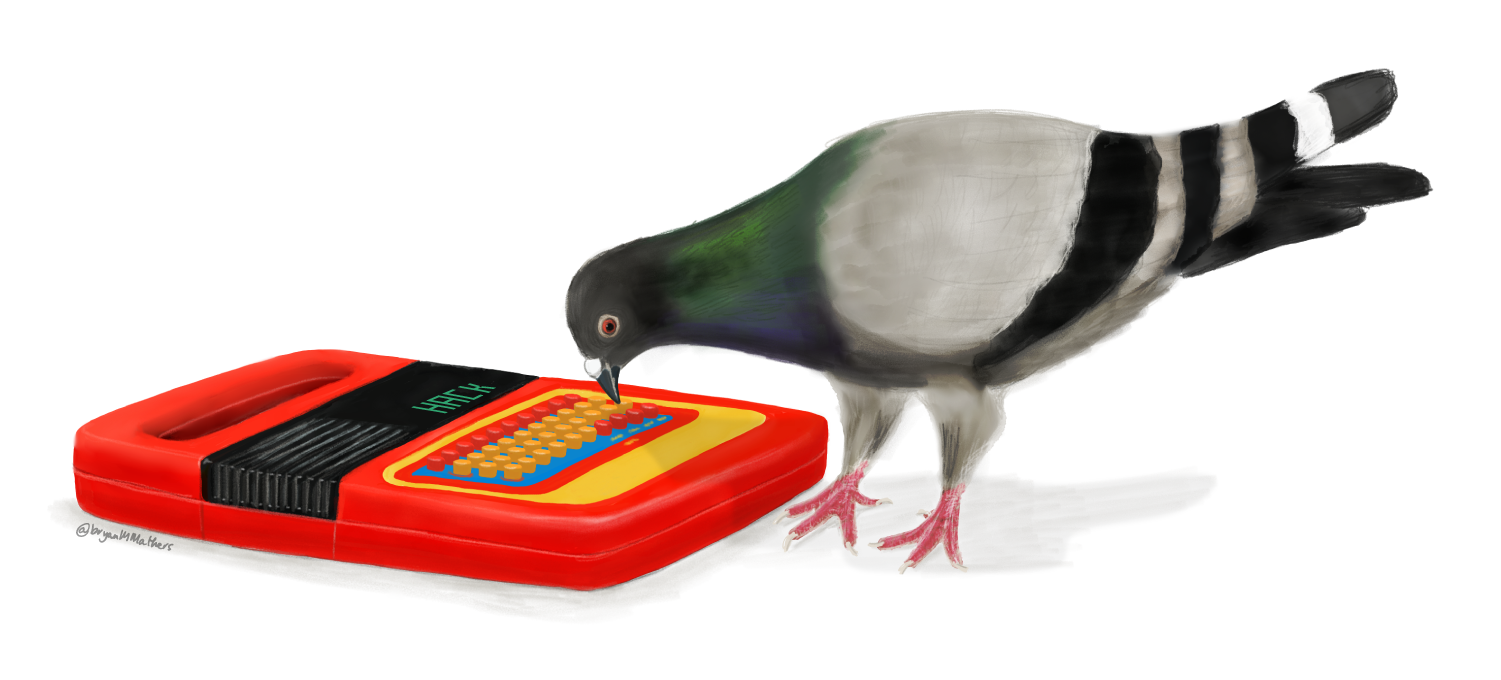The Race Report

A terrible person once said something pithy about “known knowns,” “known unknowns,” and “unknown unknowns” — and my, wouldn’t it be a better world if he had been talking about one’s first triathlon and not, say, the fabrications the Bush Administration used to justify the Iraq War. Because the triathlon, in my experience at least (n=1), is fundamentally an exercise in embracing what you are certain you can do, what you know you’ve never done before, and then a whole bunch of WTF?! that happens on race day.
Like, I knew I could swim 300 meters, but I hadn’t swam since May, and I wasn’t sure how fast. And I’d never swam and then run barefoot for quarter of a mile, put on my shoes, and hopped on my bike for a 9 mile ride. I knew I could ride my bike 9 miles, but I was renting a bike so I didn't know what to expect riding that bike 9 miles — and riding it very quickly surrounded by other people going fast as well. Yikes. Plus, I’d never ridden those 9 miles, along the Schuykill River in Philadelphia. (The 100 foot descent at the start and 100 foot climb at the end of that stage was an “unknown unknown,” because like members of the Bush Administration, I didn’t read all the pertinent reports that would have warned me of such things.) I’d never hopped off my bike after pedaling 9 miles, swapped my bike helmet for a baseball cap, and run a 5K, although I'd practiced running after biking – it's some bullshit, I can tell you that. I’d definitely never done such a ridiculous series of activities in 85 degree heat. I’d prepared two water bottles with electrolytes and planned to down them in between each activity, but was unprepared to find the bottles swarming with ants when I returned to the transition area from my swim. (Ants are carbs, right? Or are they protein? That remains a "known unknown" as I still haven’t googled to learn the repercussions of fueling one's race by ingesting insects.)
But I did it. I faced all the various unknowns and uncertainties, and now I'm a triathlete.

Oh, it was tough – both tougher and easier than I imagined, weighing all the knowns and unknowns that I was right and wrong about. The swimming was the hardest part, I reckon — not surprising since it'd been months since I'd been in the pool, but surprising too because I like to think of myself as a pretty strong swimmer. And, of course, if a race starts out hard, as mine did in the pool on Sunday, you can bet it’s going to be hard for the duration.That is, once your heart-rate is elevated from anxiety and exertion and hot, humid weather, you're spent even before your legs get tired from the swimming and biking and running.
To their credit, the organizers of this race made everything as easy as possible – it was an ideal first triathlon. They carefully explained how every event would go – how to sticker your bike and how to mark your body with your bib number, for example. They made sure that everyone made it through the swim – there were tons of lifeguards who were prepared to walk in the water next to nervous swimmers. They supported the athletes in the lead-up to and for the duration of the event, making sure that hydration and medals were still there for the "back of the pack." There were tons of volunteers, and everyone – organizers, volunteers, athletes, onlookers – was super friendly and encouraging. Big "City of Brotherly Love" kind of energy – except women only, and for just 12 miles or so.
(And I confess: I've already signed up to do the event again next summer.)
There's something about aging into this new athleticism that's given me the strength, physically and mentally, to take on these kinds of activities – activities that I have spent 50 years of my life actively avoiding. It's still incredibly intimidating, and I so easily get "spun out" fretting about the details big and small. I am not a particularly competitive person – obviously not when it comes to sports – but I really do like racing. It's not because of winning and losing. It can't be. But finishing is always, always, always a goddamn triumph.
... as I run, I don't think of much of anything worth mentioning. I just run. I run in a void. Or maybe I should put it the other way: I run in order to acquire a void. – Haruki Murakami, What I Talk About When I Talk About Running
I don’t like unknowns — known or otherwise. One of the things that draws me to physical fitness in my current state (and I’ve written about this before) is the regularity and rigors of training — a weird pleasure that comes from showing up and doing what you're told. Training helps me feel I’m in control of something in my life – a life that is otherwise veering from tragedy to tragedy, trauma to trauma, loss to loss, instability to insecurity and back again. I crave the orderliness, the systematicness of training – "a training plan."
Even before I took the obligatory photo, the night before the race, of all my gear laid out, I marveled at how much crap it takes to do a triathlon: all the crap you need to swim (e.g. goggles, swimming cap, fitness watch, heart rate monitor), plus all the crap you need to ride a bike (e.g. helmet, jersey, sunglasses, shoes), plus all the crap you need to run (e.g. different shoes, socks, hat). Plus, all the crap that's designed specifically for a triathlon (e.g. tri suit, bib belt). Plus, all the crap you'll need in transition (e.g. water bottles, gels, towel, sunscreen). I was only going to be in Philadelphia for 24 hours, but my duffle bag was overstuffed. (My purse was full of snacks too, but I ate everything before my train had even left NYC, because that's how I roll. And that's how Amtrak rolls – very, very late and then very, very slowly.)

As a writer and a runner, I'm sympathetic to the novelist and marathoner Haruki Murakami's thoughts on the technology of biking – the added worries from having to rely on all these additional pieces of cycling equipment, machinery that's feels much more complicated than just using your legs and some running shoes. Long runs can be hard and lonely, but there's something harder and lonelier about biking: "It's the same movements repeated over and over," Murakami writes of his own triathlon training. "You go up slopes, on level ground, and down slopes. Sometimes the win's with you, sometimes against you. You switch gears as needed, change your position, check your speed, pedal harder, let up a bit, check your speed, drink water, change gears, change your position... Sometimes it strikes me as an intricate form of torture. In his book the triathlete Dave Scott wrote that of all the sports man has invented cycling has got to be the most unpleasant. I totally agree."
The triathlon feels much more tech-centric than a road race (and running is already becoming so damn tech-centric!). Again, I'm surely channeling Murakami here – all that gear and worry about gear intrudes on the unthinkingness that I crave about physical movement, during endurance activities.
I really don't want to have to think too much about my training either, and that's why I always rely on a training plan. (Is that counterintuitive? I'm not sure.) I trust a coach to give me each day's workouts, their intensity, pace, duration, and so on. I think I made a mistake here because I used a machine, not a coach: I used the Runna app to train for the 5K portion of this race.
If you're familiar with my work, you probably won't be surprised by my assessment of this “personalized” training app. But I’ve heard a lot of talk in runners' circles lately about Runna, which has raised over $9 million in venture funding. And NYRR is partnering with the company for marathon training this fall. So I thought it couldn't be that bad, right?
Runna creates your "personalized" training plan by asking you what your goal race is — a 5K, 10K, half marathon, etc — how many days a week you’d like to run (and on which day you prefer to do your long run), and the finishing time of a recent race. It uses this to build your plan, giving you the distance and paces for each workout each week, which sync with your Garmin or Apple Watch. The latter is the major selling point; if programming workouts into your watch is something you'd rather not do, then perhaps Runna would be worth it for you: $17.99 a month or $109.99 a year. That is, I think, a lot more expensive than a lot of other training plans available online.
Despite invoking that word "personalized," Runna is really not terribly different from any of those other plans, most of which allow for some flexibility around what days you run and which help you figure out what your paces should be for various workouts. Of course, the latter does sometimes require looking at charts, so Runna simplifies this, for sure. But Runna is not "adaptive" – that is, it doesn't change a workout because you've struggled to hit your paces in your speed workouts or because you've missed a few runs or because your resting heart rate is elevated or what have you. It's really just a training plan with a nice interface – one that makes a few adjustments based on a simple onboarding process and that neatly integrates with your watch.
But due to this flexibility – the "personalization," sorry – the app can be a little aggressive with some of its recommendations in ways that I don't think a human coach (or even a one-size-fits-all training plan designed by a human coach) would allow. As I was training for a shorter distance than I normally race, I told Runna I only wanted to run 3 days a week. (Less running, more biking and weightlifting, I figured.) But using my previous running history, Runna tried to squeeze a 20+ mile per week routine into fewer days – it had me doing one speed workout of about 8 miles each week; a long run that topped out at 12 miles (which is pretty long for training for a 3.1 mile race!); and then one easy run of about 3 to 4 miles. This runs contrary to the 80/20 divide that most coaches recommend: 80% of workouts should be easy and the other 20% hard, but there wasn't any point in which Runna cautioned me about this or suggested that I add even a short (easy) run on a fourth day (something I started doing). And although I selected Runna's Triathlon-specific 5K training plan, there didn't really seem to be any recognition from the app or algorithm that there'd be two other sports I'd be training for each week – that is, two more sports with potentially hard and easy workouts that "the algorithm" needed to account for.
One of the complaints I've heard most often about Runna is that this rather arduous routine it builds can lead to injury – I think that's particularly true for people who feel obligated to follow the dictates of an app rather than listen to their body and adjust the prescribed workouts as necessary. But that's the promise of "personalization," isn't it – we're supposed to hand over the decision making to the machine because it purportedly knows better.
What I should have done, I know in retrospect, is find a training plan for a sprint triathlon, rather than one for a 5K run. I should have swam more. (Hell, I should have swam, period.) I should have biked at different paces. But I kicked ass nonetheless and that's because of my hard work, to be clear, not because of Runna's advice. At all.
And like I said, I've signed up to do this same event again next summer. I'll be better prepared – and ideally, that means I'll have to think much less about any of it.

Thanks for subscribing to Second Breakfast. Please consider becoming a paid subscriber. (Paid subscribers receive an additional newsletter on Mondays. There I write more generally about technology – yes, including education technology – alongside other updates on my training, therapy, etc.)





